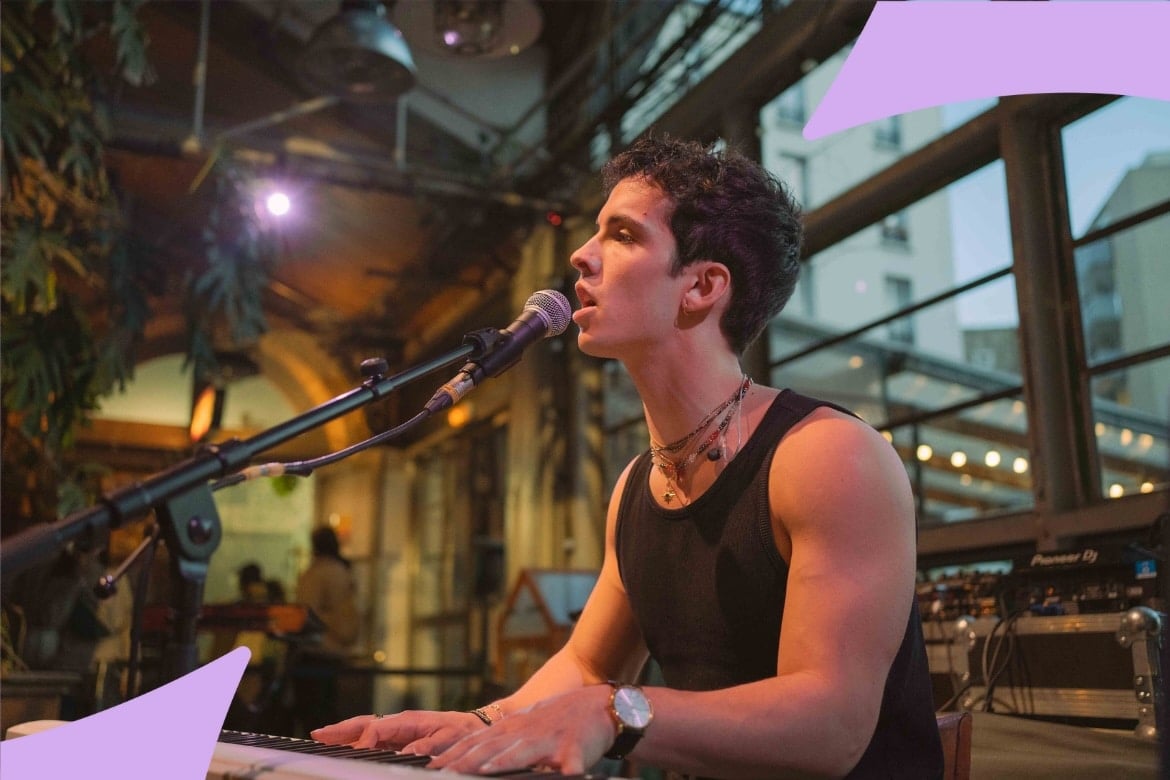Creative directors exist in almost every industry. They’re responsible for making sure the visual personality of a person, company, brand, or business makes sense and stays consistent. Here’s how that role applies to music:
1. What is a creative director in music?
It’s 2025, and the pop girlies are dominating the charts. Billie Eilish, Olivia Rodrigo, Taylor Swift, Sabrina Carpenter, and Chappell Roan are all wildly successful in the genre of pop, yet they’re all pretty different when it comes to how they present themselves. They have essentially amplified their personalities to create their own space in the genre, and some cater to different audiences than others. This is in part thanks to the creative directors they work with.
Creative directors often work with/at labels as a sort of in-house artistic consultant. In music, their role is to find an artist’s brand identity and help them convey that message to the public. This means honing in on an artist’s personal style, tastes, visual persona, and overall public image. This covers everything from the clothes they wear and how they do their hair to what they’re posting on social media and what their music videos look like.
In short, creative directors help:
- Identify an artist’s brand
- Help guide them in their public image
- Maintain this image on social media and online
- Understand their artistic vision and find the right collaborators for the artist

2. Creative directors vs A&Rs and PR
While there is sometimes overlap in responsibility, creative directors and A&Rs are for the most part very different.
A&Rs work to scout artists, writers, and producers for their label to sign. Creative directors work with signed artists to develop their visuals and voice. One covers the “before”, and another covers the “after”. A&Rs take a step back after the artist has been signed and begins career development in the label, which is when creative directors take the reigns.The overlap can happen when the label discusses what their vision for an artist is long-term. Many people within a label come together to figure this out, and both creative directors and A&Rs can present a vision they have for someone.
This is worth mentioning because some labels work differently and have smaller teams, therefore allowing for more overlap in who does what. Smaller labels will see A&Rs covering both roles, while others separate the administrative and creative departments.
PR is “public relations” and covers what is said publicly to protect an artist’s image. They have no say in anything creative, simply public statements or what not to say in an interview.
3. What kind of advice do creative directors give?
Creative directors can have a say in anything creative that is seen or heard by the public. This could mean suggesting that an artist releases a certain single because that style is a fan favorite, attends a certain event because it showcases the artist’s values, posts certain pictures on Instagram, participates in certain trends, or wears a style of clothing on tour/during shows.
They are the filter artists can use to better understand how other people see them and how to stay consistent (or change, if they want to!)
4. How artists and creative directors collaborate
There is a balance to strike between the artist’s vision and the creative director’s expertise, and that can usually be achieved through simple communication and selectivity. The creative director will do everything in their power to take an artist’s personal needs and vision and mold them into something convincing and presentable. If you are an artist and are working with a creative director that does not align with how you see yourself moving forward, you’re working with the wrong person!
Before making a choice on who to work with, you must spend time with the people you’ll be collaborating with. This requires meetings and discussions that will allow you to get to know the creative director personally, allowing you to decide whether or not your ideas are compatible, if they truly understand you and your artistic vision, if they have the rights connections to help you reach your goal. Ask tons of questions and know what you want before going in.
| Check out: Recording Contracts: What to expect and what to avoid
5. How long do creative directors stay involved?
Creative directors will work with artists for as long as their contract with the label is. The longer the better, so that the artist’s image can be crafted and refined over time.
Nowadays, where the music industry is in constant change, it’s important to stay current, so creative directors are working around the clock to maintain a rhythm of content and releases. It is not a seasonal job, so they’ll be involved for as long as necessary, even if an artist hasn’t released anything in a while.
6. Who creatively directs independent artists?
Independent artists have the privilege of not being tied down to one person’s vision, so it’s worth taking advantage of.
If someone around them is creatively inclined and understands today’s social media landscape and public relations, they might be equipped to advise the artist when necessary. You do not need tons of resources to be a creative director, though connections in the creative industry (photographers, stylists, makeup artists, videographers, editors, etc) definitely helps.
Indie artists can also gather friends who listen to the type of music they make (ideally from different backgrounds) and workshop what they think would make sense for them in terms of album visuals, clothing style, and general persona. Sometimes hearing multiple opinions helps one find their own!
| Check out: How to get signed by label when you are an independent artist
– Written by Emma Ballay in its original version and translated by Natalia Soborksi –
—


